Everything we do starts in our heads. Our brain is always busy, controlling things like our heartbeat, breathing, and digestion without us even thinking about it.
But the outside of our head matters too! Our hair, forehead, eyebrows, eyes, nose, lips, ears, and chin – they all tell a story. And that story is key from the moment we’re born until we die. We look at someone’s face to get clues about who they are, whether they’re family, friends, or more.
Body language of the head and neck comprise the primary body language cues. The head is a non-verbal form of communication that is more complicated than just knowing how to read it.
Table of Contents
Common Gestures Seen Regularly With The Head
Nodding and Shaking Your Head in Communication
Nodding typically signifies agreement, while shaking your head usually means disagreement. These gestures can influence how others perceive and react during a conversation.
If you want to see how someone might shake their head while talking about something good, take a look at my analysis of the video below. In it, Rebecca Lose is shaking her head even though she’s remembering a happy time. Keep in mind, just because someone shakes their head, it doesn’t always mean “no.”
The Still Head for Authority and Focus
Notice the man in the orange; his head stays still, even as the guy in pink shorts attempts to throw a sucker punch. This is a classic case of someone keeping their head unmoved during a confrontation showing his dominance.
Tilting Your Head as a Sign of Curiosity or Affection
A sideways tilt of the head can express interest, confusion, or be used as a flirtatious gesture.
In the below YouTube click you will see Bill Gates showing curisoity with the head title at the very start of the click he is taking in the quesiton and tilting his head to the sid with his body.
Raising Your Head to Show Interest
Lifting your head often indicates curiosity or a response to something that has caught your attention.
In the video below, watch as Ben Shapiro speaks to a woman with her head bowed while he presents his argument and question. When she responds to his question, you’ll notice she slightly lifts her head. This is a prime example of someone raising their head to make a point in a real-life situation.
Touching the Head and Its Meanings
Touching the head or face can indicate anxiety, thoughtfulness, or self-reproach, and can have different interpretations across cultures.
Take a peek at the brief video below. If you skip ahead to the 43-second mark, you’ll spot a guy sweating and touching his head during an real life interview.
Dropping Your Head as a Shield
Dropping your head can act as a protective gesture in response to fear or to show deference. Keeping eye contact while doing so can signal romantic interest or a respectful acknowledgment of someone’s power.
In an episode of “Come Dine with Me,” there’s an argument where a lady named Jane lowers her head, dodging the verbal onslaught from a man, while trying to avoid eye contact. This serves as a perfect real-life example as hanging your head in shame.

Pointing With Your Head to Indicate Interest
Directing your head towards a person or object shows interest, and it’s sometimes a subtle cue used to identify who holds power within a group.
In the clip below, you’ll notice Jack Jones tilting his head to show who he’s engaging with in the prank this is the perfect example of using you head to indicate something.
Head Lowering as a Greeting or Agreement
A quick downward nod can serve as a subtle greeting or a sign of agreement without drawing too much attention.
In the clip, if you jump to 1:01, you’ll observe Vladimir Putin at an Armistice Ceremony receiving a nod from someone in the crowd. I’d guess this is someone familiar with him. It’s interesting to see this form of greeting before they even shake hands, highlighting the connection and body language before any words are exchanged.
How To Read Body Language
If you’re keen on getting to grips with body language, it’s crucial to learn how to interpret nonverbal cues accurately. Make sure to read this article before you proceed for a better understanding.
9 Positive Head Body Language Gestures
| Gesture | Description |
|---|---|
| Nodding | A vertical movement of the head, signaling agreement or confirmation. |
| Tilting the Head | Indicates interest or contemplation, often perceived as a gesture of engagement. |
| Smiling with Eyes and Mouth | A full-face smile that suggests genuine pleasure or friendliness. |
| Leaning Forward | Shows active involvement and interest in the conversation or situation. |
| Maintaining Eye Contact | Suggests confidence and sincerity, and indicates focus on the interaction. |
| Raised Eyebrows | Can denote surprise or enthusiasm, generally a sign of positive engagement. |
| Relaxed Brow | A smooth forehead indicates a calm and open attitude. |
| Head Held High | Reflects self-esteem and positive emotion. |
| Mirroring | Copying the other person’s head movements to create rapport and show agreement. |
Hair
Hair is pretty powerful in non-verbal communication. Nice-looking hair is something people naturally find appealing, and if hair looks bad, it might make us think someone isn’t doing well health-wise or emotionally. Hair can attract or push people away, fit in or stand out, and it can say a lot about who we are and what we do for a living.
Fiddling with our hair, like twirling or stroking it, is something we do to calm down. It’s often done by women and can show they are in a good mood or trying to ease stress, like while chilling out, nervous about something, or dealing with a stressful situation like a rocky plane ride.
When women play with their hair showing the inside of their hand, it’s a comforting gesture that often happens when they’re relaxed or feeling confident with someone, like when flirting.
Men sometimes run their fingers through their hair when they’re stressed. This not only cools them down by letting air onto their scalp but also gives a soothing feeling because of the pressure on their skin. It might also show they’re worried or uncertain.
Women airing out their hair by flipping it or lifting it up can help them cool down and feel more relaxed. They do this in a different way than men, often as a way to comfort themselves when they’re hot or stressed.
What does head nodding mean in body language
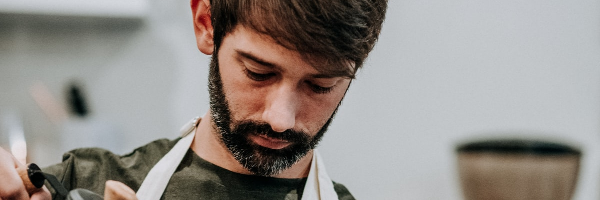
During conversations, nodding serves to affirm, usually in cadence, that the person is hearing and receptive to the message. Generally, it signals agreement except in those situations where the head nodding is accompanied by lip pursing, which might suggest disagreement.
You’ll often notice people nodding their heads as a way to say “yes.”
Nodding generally means agreement across different cultures.
But sometimes, you might catch someone nodding while saying “no.” This mix-up of signals can be a clue that there’s more to the situation. Especially if you spot other anxious actions along with this contradictory nod, it likely means something’s not right.
You’ll also see head nods in greetings, like when someone walks into a room or a meeting.
A nod can be a sign that someone approves or values what’s being said, and it can help people connect with each other.
Depending on where you are, some cultures might nod their heads more often as part of their way of communicating agreement or acknowledgement.
How can we use head nodding to better communicate with others

Secret Body Language Tip
Nodding our heads during a chat is a simple way to show we’re engaged and understand what’s being said.
It’s not about verbally answering back but rather giving a silent nudge with our body language to keep the conversation flowing, showing agreement, or rooting for the person to carry on.
When we mirror someone’s body language with a nod, it’s key to keep it natural so that it doesn’t become obvious we’re copying them.
Overall, nodding is seen as a friendly gesture, and it’s a good practice to include it in our conversations.
What does body language head back mean?
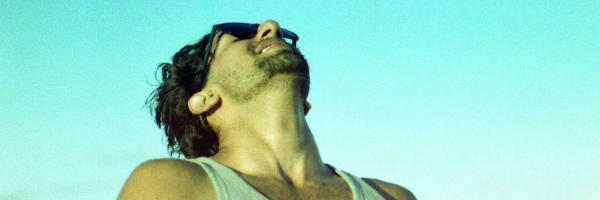
If someone has their head tilted back, they’re showing off their neck—a vulnerable spot. Most of us usually guard our necks without even thinking about it. So, when you see someone with their head back, they’re likely feeling pretty confident or maybe even acting dominant.
When you notice someone entering a place with their head held back, it’s wise not to lock eyes with them right away. It might come off as confrontational. Better to watch them from a distance, see how they interact, and wait until they shift out of that posture.
Typically, a person with their head back might think they’re in charge or above someone else.
How can we use our head back to communicate better
Tilting your head back can signal confidence, but it’s a move you should use carefully—it can come off as overconfidence or arrogance. It’s a gesture that says you’re in charge and sure of yourself.
If you’re curious about how this works, try it out in a safe environment. Observe how people respond to you.
Generally, holding your head back isn’t the friendliest body language and is best reserved for moments when you need to project a strong sense of self-assurance.
What can you tell about a person from their hat?

When it comes to headwear, people from all over the world wear different things on their heads for many reasons. For example, feather headdresses might show that someone is a leader in Native American cultures, while a hard hat might show that someone is a construction worker. A fancy hat might be a sign of someone’s high social status, and wearing a helmet could tell you that someone is into biking or climbing.
What does head bobbing mean?
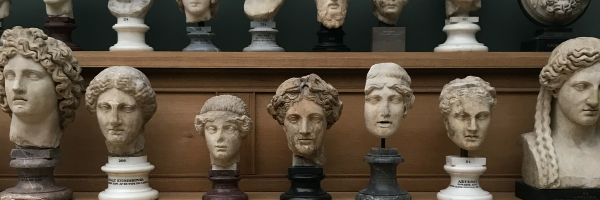
Head bobbing is a common body language signal that indicates agreement, understanding and listening.
It shows that the person is paying attention and agreeing with the speaker.
This movement usually accompanies a nod of the head.
In contrast to nodding, head bobbing is quick and repeats up and down in a rhythmic motion that resembles a swaying or bouncing motion.
If you want to try it out for yourself, find a friend or coworker who will let you watch them from the side as they speak.
What does head forward mean in body language
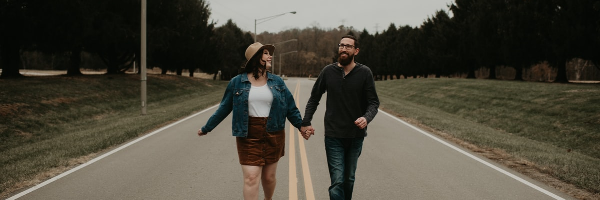
Head bobbing is when someone moves their head up and down quickly. It’s a way of showing they agree or understand what’s being said.
It’s like nodding, but faster, and it keeps going like a little dance.
If you’re curious to see it in action, you could watch someone chat from the side and see if they do it.
What does body language head movement mean
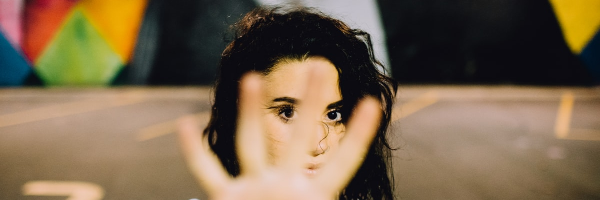
The head movement also plays an important role in body language. Head movement refers to the change of direction that the head makes when we speak or listen to someone, and it can be an indicator of our attitude and different emotions. For example:
- When we nod a simple gesture of agreement
- When we shake our head: It means disagreement or no
- When we look at each other: It means interest
- When we turn away it a sign of disintrest
- When we drop our head it means we are feeling low or dont want to speak with others.
There are plenty of meanings to head movement the best way to understand this is by reading the context around the head movement to understand what is really going on with a person or group of people.
What does head position mean?
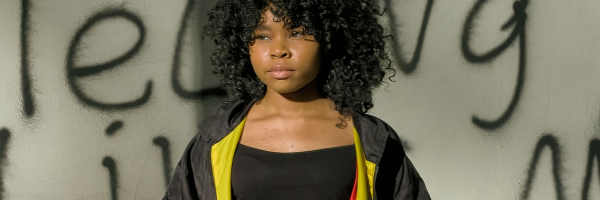
The head position is a very important aspect of body language. This is because it can indicate how we feel and what we are thinking.
Some of the most common head positions that people use are:
- Neutral Head Position: When someone has their head held straight, this is often considered as a neutral position and it means that they are relaxed, still, and attentive.
2. Lower Head Position: When someone lowers their head, this often means that they are feeling shy, embarrassed or ashamed. They might be trying to hide their feelings from others or they could be sad.
3. Higher Head Position: When someone raises their head, this often signifies that they want to be seen as powerful or dominant over others around them. They can also want to show off something or hide something from others.
Head rub and stroking mean?

When someone body rubs your head it is a gesture of love, care, and affection. It feels relaxing.
When people have their foreheads touched on the head, it’s an affectionate gesture that shows you’re being loved and cared for.
However, when we see someone rub their head, it could also mean they are under pressure or feeling tension in a situation.
The meaning of the gesture can change depending on where on the head someone is rubbing. Rubbing or of the ears means that you are listening to them carefully while rubbing on the neck means that they are worried about something context is key here to understand what is really going on with that person and to understand what we are seeing.
If the conversation is negative and we see someone rubbing their head, we know they are feeling under pressure.
Pay close attention to the context and moment when we see head rubbing.
Head touching mean in body language
Head touching can often be confused with insecurity or uncertainty, but it is important to note that people associate head touching with both feelings of security and feelings of discomfort.
Head touching can have a different meaning depending on who does it and in what context it is done.
- Head touching can be misunderstood as a sign of insecurity or doubt.
- It’s crucial to realize that head touching can indicate both comfort and discomfort.
- The meaning behind head touching varies based on the person doing it.
- Context matters: where and when head touching occurs changes its significance.
Body language with head down mean

Head down is a gesture that can be interpreted as someone feeling shame or guilt. But it could also mean someone is feeling down or depressed. Again context is key.
shaking head no meaning
Nodding usually means “yes” and shaking the head usually means “no.”
But with body language, it’s not always that simple. For example, nodding doesn’t always mean agreement.
Shaking your head might show you don’t agree, or it might mean you’re just thinking about something.
Be careful not to get mixed up with these gestures when you’re trying to figure out body language.
- Nodding often means “yes.”
- Shaking the head typically signifies “no.”
- Body language cues like nodding don’t always indicate agreement.
- A head shake can express disagreement or contemplation.
- Misreading these gestures can lead to misunderstandings in communication.
Head tilt to right
Tilting your head to the right shows you’re interested in the conversation. It can mean you want more info or you agree with what’s being said. Look for hints in the talk to see why someone is tilting their head they are showing intrest in your conversation or appearance.
When to tilt your head to the right?
Do this to show you’re into what the other person is saying. It’s a good, silent way to connect and show you’re paying attention.
Resting head on hand

Putting your head in your hands often means you’re lost in thought or dreaming about something that’s going to happen.
It can also show that you’re really focusing on something happening right now.
Like when you’re really into a movie or a book, you might do this.
Resting your head on your hands is a way to show others you’re really thinking hard about something.
What does hat lifting do in body Language
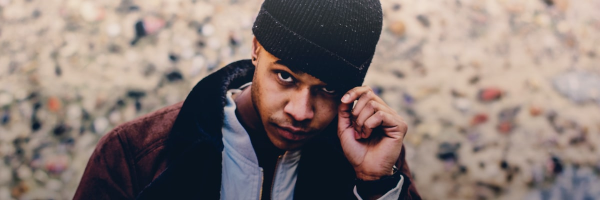
Hat lifting is used to signal that the speaker has shared a thought or an idea with the listener. Raising your hat is a way of saying “hello” or “goodbye”.
Hat lifting can be used to show respect to someone, for example, by taking one’s hat off in their presence.
More YouTube Videos on Head Body Language
Supporting Data
URL: An Essay About Body Language
- Facial Expressions and Nodding:
- Extract: “From my childhood I have been told ‘nod your head and smile when talking to someone’. I have been using this hint everyday and the result is always positive. It means our body can affect someone’s thoughts about us, as in this example of mine, nodding your head and smiling makes a great impression on others about you.”
- Facial Expressions as the ‘Head’ of Body Language:
- Extract: “Facial expressions or mimics is the ‘head’ of the body language because only your eyebrows, lip movements, cheek movements can show the feeling better than your words.”
- Importance in Communication:
- Extract: “This theory was made by Michael Argyle (1925- 2002), who was a social psychologist. In the late 1960s he studied social skills, body language, non-verbal communication and interpersonal behaviour. In this study, he found that non-verbal signals can be much more important and useful than verbal communication when trying to trigger peoples’ attitudes and feelings.”
URL: Helpguide.org
The head in the context of body movement and posture. It suggests that the way people hold their head can communicate a lot about them. Here is the specific mention:
- Body Movement and Posture: “Consider how your perceptions of people are affected by the way they sit, walk, stand, or hold their head. The way you move and carry yourself communicates a wealth of information to the world.”Source: The Importance of Effective Communication, Edward G. Wertheim, Ph.D.
You may also like
Final Thoughts
Head movements, postures, and facial expressions all make up the body language of the head. Everyone uses these signs to send messages, sometimes without even knowing it.
Our head’s body language can add to what we’re saying or can tell a different story from our words. It’s about how we use our personal space, how we touch, where we look, and how we present ourselves. In places where people hang out, the way someone holds their head can say a lot about their mood or thoughts.

